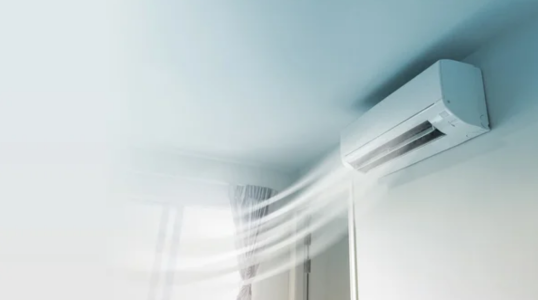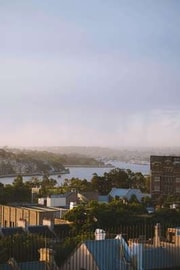Exposed: How a Lack of Air Conditioning and Insulation is Putting WA Public Housing Tenants at Risk!
By
Gian T
- Replies 0
In the vast and sun-drenched expanse of Western Australia, the blistering heat is not just a seasonal challenge but a daily reality for many, especially those living in the northern regions. For public housing tenants, the struggle against the scorching temperatures is exacerbated by a lack of adequate air conditioning and insulation in their homes. This issue is not just about comfort; it's a matter of health and well-being with serious implications for the most vulnerable members of our community.
The plight of these residents is a stark reminder of the disparities that exist within our society. Savannah, a single mother-of-three from Broome, a town where wet season temperatures soar close to 40 degrees, has had to resort to driving around town at night to soothe her baby to sleep in the car's air conditioning. Her public housing unit, provided by Western Australia's Department of Communities, came without cooling and proper insulation, forcing her to spend most of her time outside under the hose or moving her mattress into the lounge room, the only area with an air conditioner she could barely afford.
Savannah's story is not an isolated incident. It's a narrative shared by many tenants in public and remote community housing who are being forced to live in unreasonably hot houses. The combination of old, poorly insulated homes and a lack of mandatory air conditioning drives people into energy poverty, a state where a significant portion of income is spent on energy bills, leaving little for other essentials.
The state government is being urged to prioritise improving public and community housing living conditions. However, air conditioning is not mandatory in public and community housing in northern WA, and many houses haven't received significant renovation in decades. Residents, often low-income and vulnerable, end up buying cheap, poorly installed units that do little to retain cool air.
A 2022 report by the Kimberley Community Legal Centre highlighted that tenants endured extreme heat in poor-quality housing, couldn't afford air conditioning, and suffered from heat stress health impacts. This has led to a class action into the living conditions of WA's public housing residents, signalling a cry for change that cannot be ignored.
Financial counsellors like Sen Amaratunga from Broome Circle have witnessed firsthand the financial strain that air conditioning costs place on clients. Many residents opt for cheap, inefficient box air conditioners and live in old housing with bad insulation, often due to a lack of education on energy efficiency. The spike in applications for Horizon Power's Hardship Utility Grant Scheme during the wet season underscores the dire situation many face.
Experts like Kieran Wong, director of Fulcrum Agency, argue that mandatory air conditioning and retrofitting are required to improve tenants' lives. He points out the broader systemic costs to the health, justice, and education systems when people cannot live comfortably in their homes. Energy Australia estimates suggest that households could save up to 25 per cent on every energy bill if homes were properly insulated, highlighting the long-term benefits of investing in better housing conditions.
The government, for its part, defends its efforts, stating that properties are built exceeding minimum standards with 'consideration' for thermal comfort and sustainability. However, for tenants like Savannah, the reality on the ground is starkly different, and the question remains: Why is air conditioning not provided when the extreme heat is a well-known fact?
 As we delve into this pressing issue, we invite our readers to consider the human cost of inadequate housing conditions and the importance of advocating for change. Have you or someone you know faced similar struggles with housing in extreme temperatures? Share your stories and thoughts with us as we continue to shine a light on the challenges faced by our community's most vulnerable and push for solutions that ensure a safe, comfortable, and dignified living environment for all.
As we delve into this pressing issue, we invite our readers to consider the human cost of inadequate housing conditions and the importance of advocating for change. Have you or someone you know faced similar struggles with housing in extreme temperatures? Share your stories and thoughts with us as we continue to shine a light on the challenges faced by our community's most vulnerable and push for solutions that ensure a safe, comfortable, and dignified living environment for all.
The plight of these residents is a stark reminder of the disparities that exist within our society. Savannah, a single mother-of-three from Broome, a town where wet season temperatures soar close to 40 degrees, has had to resort to driving around town at night to soothe her baby to sleep in the car's air conditioning. Her public housing unit, provided by Western Australia's Department of Communities, came without cooling and proper insulation, forcing her to spend most of her time outside under the hose or moving her mattress into the lounge room, the only area with an air conditioner she could barely afford.
Savannah's story is not an isolated incident. It's a narrative shared by many tenants in public and remote community housing who are being forced to live in unreasonably hot houses. The combination of old, poorly insulated homes and a lack of mandatory air conditioning drives people into energy poverty, a state where a significant portion of income is spent on energy bills, leaving little for other essentials.
The state government is being urged to prioritise improving public and community housing living conditions. However, air conditioning is not mandatory in public and community housing in northern WA, and many houses haven't received significant renovation in decades. Residents, often low-income and vulnerable, end up buying cheap, poorly installed units that do little to retain cool air.
A 2022 report by the Kimberley Community Legal Centre highlighted that tenants endured extreme heat in poor-quality housing, couldn't afford air conditioning, and suffered from heat stress health impacts. This has led to a class action into the living conditions of WA's public housing residents, signalling a cry for change that cannot be ignored.
Financial counsellors like Sen Amaratunga from Broome Circle have witnessed firsthand the financial strain that air conditioning costs place on clients. Many residents opt for cheap, inefficient box air conditioners and live in old housing with bad insulation, often due to a lack of education on energy efficiency. The spike in applications for Horizon Power's Hardship Utility Grant Scheme during the wet season underscores the dire situation many face.
Experts like Kieran Wong, director of Fulcrum Agency, argue that mandatory air conditioning and retrofitting are required to improve tenants' lives. He points out the broader systemic costs to the health, justice, and education systems when people cannot live comfortably in their homes. Energy Australia estimates suggest that households could save up to 25 per cent on every energy bill if homes were properly insulated, highlighting the long-term benefits of investing in better housing conditions.
The government, for its part, defends its efforts, stating that properties are built exceeding minimum standards with 'consideration' for thermal comfort and sustainability. However, for tenants like Savannah, the reality on the ground is starkly different, and the question remains: Why is air conditioning not provided when the extreme heat is a well-known fact?
Key Takeaways
- Public housing tenants in Western Australia are experiencing unreasonably hot living conditions due to a lack of air conditioning and poor insulation.
- Advocates and residents are calling on the state government to take action by retrofitting homes with air conditioning and improving insulation.
- Financial counsellors point out that the high cost of air conditioning is a significant financial burden for tenants, leading some to energy poverty.
- The Department of Communities states that WA social housing is built to a standard that exceeds minimum requirements, but residents argue that more needs to be done to make homes comfortable in the extreme heat.








